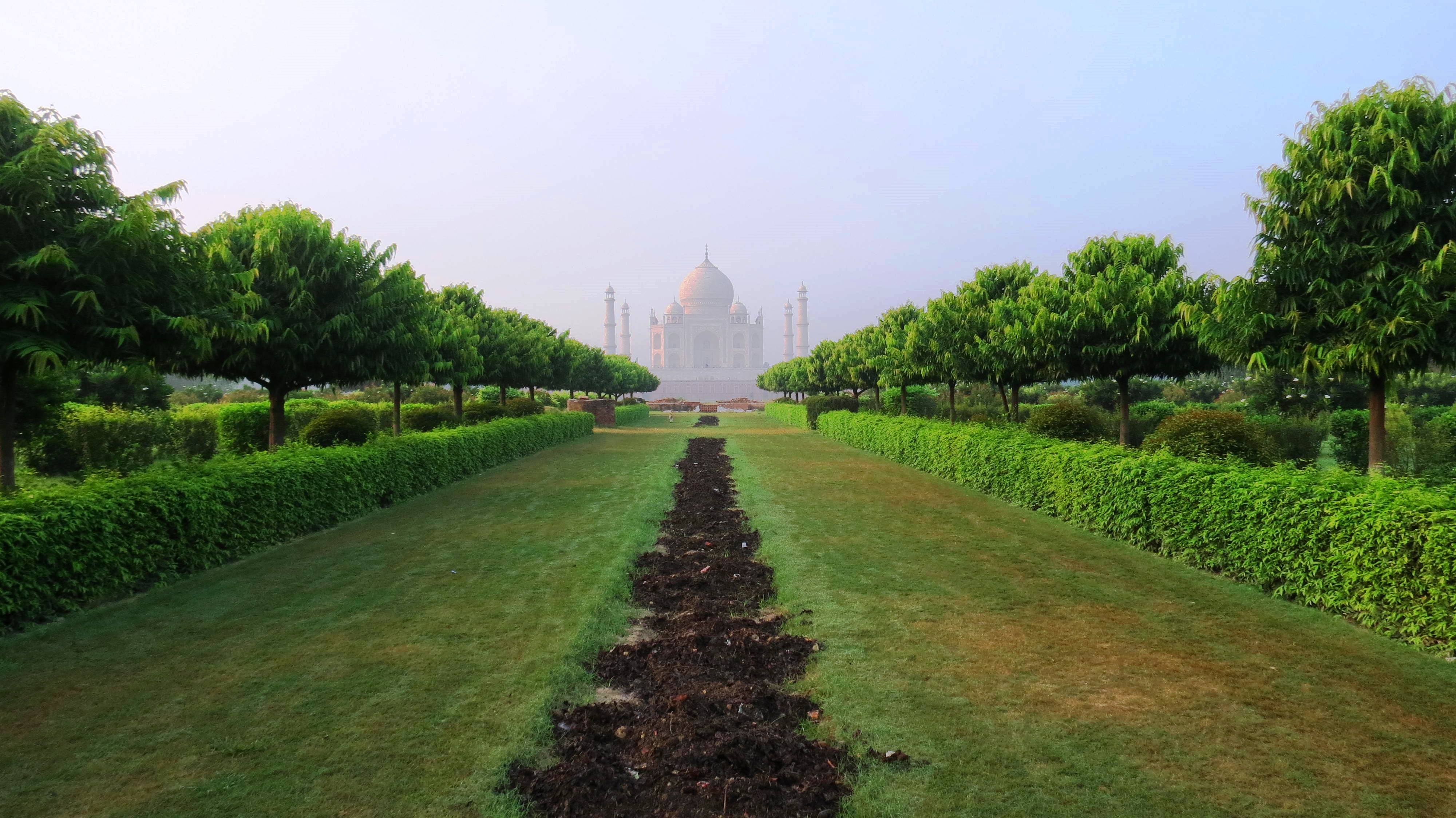Places to visit in Agra
Fondly known as the ‘City of the Taj’, Agra is a must- visit city on any tour of India. Located 220 km from Delhi, the city provides avid glimpses of Mughal architecture. Formerly the capital of the Mughal Empire, the culture and heritage still exists in the bylanes of the city alluring tourists from far ends of the globe. The view of the Taj gives more than plenty reasons to pay a visit to Agra.
An Agra tour feels like an experience of India's Mughal period. The seat of the Mughal Empire for over 300 years, the town by the River Yamuna is one of the most historical and culturally-enriched places to visit in India. Besides, the omnipresent Mughal architecture and not to forget the heavenly Taj Mahal, Agra has a name for its fascinating tales, marble-carvings, delightful food- espcailly the mouth-watering pethas (sweets), colourful festivals, and so much more.
No matter how many times you look at the Taj Mahal you will never feel less than awe for the marvel. Built as a tribute by the Mughal Emperor Shah Jahan for his beloved Mumtaz Mahal, Taj Mahal is the testimony of eternal love. The view takes your breath away. In the early morning sunshine, the hours of the setting sun and under the full-moon light, the Taj looks a beauty beyond words. Furthermore, Agra's attractions include the Red Fort, built by Emperor Akbar on the banks of the River Yamuna. The red-sandstone fortress was the seat of governance of the Mughals. Listed among the UNESCO World heritage sites, the walled city in the fort has many interesting specimens of architecture. The Itmad-ud-Daulah, also known as ‘Baby Taj’ is a mausoleum built for Empress Noor Jahan's father is one of the impressive places to visit in Agra.
Moving further from the city but easily accessible are- Sikandra, the mausoleum of Emperor Akbar, and the Fatehpur Sikri, the abandoned Mughal City. The once glorious city of the Mughal Empire Fatehpur Sikri was abandoned for the scarcity of water. The ghost town has a very remarkable architecture and interesting stories. Starting from the world’s hugest gate, Buland Darwaza to the spectacular structures in the walled city, the UNESCO heritage site is one of the must-visit historical places to see in India and the most visited tourist city in North India. A point of the popular Golden Triangle circuit as well as one of the best short getaways from Delhi.

Taj Mahal
Taj Mahal: Emperor Shah Jahan constructed the Taj Mahal in the memory of his wife Mumtaj Mahal who died during the birth of their child in 1631. This white-marble mausoleum is one of the most beautiful structures in the world and is granted the title of one of the 'wonders of the world'. The UNESCO World Heritage Site is also known as the 'icon of eternal love'. Without a doubt, it is the most recognized and most visited landmark in India. The construction of this famous monument is said to have taken 22 years, starting from 1631. Over 20,000 artisans were working day and night for the construction of this landmark. Craftspersons and whizzes were brought from France and Italy. And the chief architect was from Iran. The visit to the Taj Mahal, will long be remembered by you as the highlight of your Golden Triangle Tour.

Red Fort
Agra Fort: Emperor Akbar started the construction of this huge red sandstone Agra Fort on the bank of Yamuna River in 1565. It was mainly constructed for the soldiers until his grandson, Shah Jahan, added more opulent accommodations. There are a number of attractive buildings within its porches such as Samman Burj, where Shah Jahan was imprisoned by his son, Moti Masjid, a white marble mosque, Diwan–e–Am, Diwan–e–Khas, Jahangir’s Palace, Khaas Mahal and Sheesh Mahal.

Mehtab Bagh
Mehtab Bagh is situated on the banks of River Yamuna on the opposite bank of Taj Mahal. The garden is spread over an area of 25 acres. It is conjectured that Shah Jahan had plans to create a mausoleum identical to Taj Mahal at this site. The garden provides excellent views of the Taj Mahal

Itimad-ud-Daulah
Itimad-ud-Daulah described as a "jewel box", and also known as a baby Taj , the tomb of I'timad-ud-Daulah is often regarded as a draft of the Taj Mahal. Along with the main building, the structure consists of numerous outbuildings and gardens. The tomb, built between 1622 and 1628, represents a transition between the first phase of monumental Mughal architecture – primarily built from red sandstone with marble decorations

Tomb of Akbar the Great
Akbar's tomb is the tomb of the Mughal emperor Akbar. This tomb is an important Mughal architectural masterpiece. It was built in 1605–1613 by his son Jahangir and is situated in 119 acres of grounds in Sikandra, a sub of Agra, Uttar Pradesh, India.

Tomb of Mariam-UZ-Zamani
The Tomb of Mariam-uz-Zamani is the mausoleum of Mariam-uz-Zamani, the Queen consort of the Mughal Emperor Akbar. The tomb was built by Jahangir, in memory of his mother Mariam-uz-Zamani. The tomb is located in Sikandra, a suburb of Agra.

